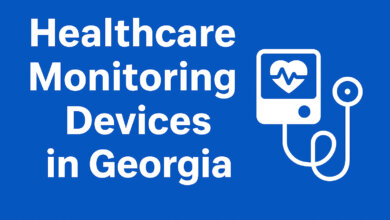Why Do Medical Card Premiums Increase Yearly? Here’s the Explanation
If you’ve ever noticed that your medical card premium goes up every year, you’re not alone. Many Malaysians feel frustrated or confused when their health insurance costs increase, especially if they’ve never made a claim. But these annual price hikes are not random or unfair. They’re the result of several underlying factors tied to the nature of healthcare, insurance, and your risk profile.
In this article, we’ll break down why premiums go up, how insurers calculate these changes, and what you can do to manage rising costs.
Aging and Higher Health Risks
The most direct reason for rising premiums is age. As you grow older, your risk of developing illnesses increases. Medical cards are designed to reflect your risk level each year, especially if you’re on an annually renewable plan.
-
In your 20s, premiums are low because the chances of major health events are minimal.
-
Once you enter your 40s or 50s, the likelihood of chronic conditions (like diabetes, hypertension, or high cholesterol) rises significantly.
-
By your 60s, insurers often place you in a high-risk group, which leads to steep premium increases.
This adjustment is not a penalty—it’s a risk-based pricing model that ensures the sustainability of coverage.
Medical Inflation
Healthcare costs in Malaysia, as in many countries, rise faster than general inflation. This phenomenon is known as medical inflation, and it directly impacts your premium.
Some factors driving medical inflation include:
-
More advanced (and expensive) medical technologies
-
Higher doctor consultation fees
-
Rising costs of medication and diagnostic tests
-
Longer hospital stays and specialist care
Even if you never visit the hospital, your premium reflects the increasing cost of potential treatment. On average, Malaysia sees medical inflation rates of 10–15% per year. This means that a hospital bill that costs RM10,000 today could cost RM12,000 next year, and your insurance premium rises accordingly.
Plan Benefits and Annual Limits
If your plan includes generous benefits—such as high room & board limits, outpatient specialist care, or unlimited annual coverage—your premium will be adjusted over time to keep up with those benefits.
Each year, insurers review the value of:
-
Room & board limits (e.g. RM200 per night)
-
Overall annual coverage (e.g. RM1 million per year)
-
Additional riders or wellness services
If your benefits increase or are adjusted due to inflation, the premium follows suit. In other words, the more comprehensive your protection, the more sensitive it is to rising medical costs.
Claims Experience of the Insurance Pool
Insurance is built on risk-sharing. Everyone in your age group or plan category contributes premiums into a shared pool, which pays out claims.
If many people in your age band or policy type make high claims within a year, insurers may adjust the premiums for that group. This is known as experience rating.
Even if you personally didn’t file a claim, your premium can still go up if:
-
The group had high hospital admission rates
-
Expensive medical procedures were paid out
-
Unexpected illnesses or pandemics increased overall costs
This mechanism ensures the insurer can continue providing benefits sustainably.
Administrative and Operational Costs
Insurance companies face increasing operational expenses each year:
-
Staff salaries
-
Customer service infrastructure
-
Regulatory compliance
-
Digital systems and mobile app maintenance
These rising costs also factor into your annual premium. While they represent a smaller portion compared to age or medical inflation, they still play a role in your premium adjustments.
Riders and Add-Ons
If you’ve added riders, such as outpatient care, maternity coverage, or personal accident benefits, these often come with their own premium structures that increase separately.
Some riders have guaranteed escalation (e.g, 5% annual increase), especially if they cover services that see yearly cost growth. Reviewing your riders annually can help you understand where premium hikes are coming from.
No-Claim Doesn’t Equal No-Risk
A common misconception is: “I didn’t claim last year, so my premium should stay the same.”
However, premiums are not calculated based on individual claims alone. They’re based on anticipated risk and projected costs. Just because you didn’t go to the hospital doesn’t mean you won’t need treatment next year, and insurance must price that risk in advance.
Think of it like car insurance: even safe drivers pay more if the roads become more dangerous.
How to Manage Rising Premiums
While annual premium hikes are mostly unavoidable, here are a few tips to manage the impact:
Review Your Plan Regularly
You may be over-insured or paying for benefits you don’t need. Reviewing your plan with a licensed agent or financial advisor can help adjust coverage based on your current needs.
Consider Increasing Deductibles
If you’re financially able to cover small medical costs yourself, increasing your plan’s deductible can reduce your monthly premium.
Switch Providers (With Caution)
If your premiums become unaffordable, compare plans from other insurers. But beware of:
-
Restarting waiting periods
-
Losing coverage for newly developed conditions
Always consult before switching.
Buy Early and Lock in Rates
Some insurers offer level-premium plans where the rate stays constant for a fixed period (e.g, 10–20 years). Getting one early helps avoid frequent hikes.
Final Thoughts
Medical card premiums increase yearly for valid, structural reasons—age, healthcare inflation, and shared risk. While it may feel like a burden, these increases ensure that your coverage stays relevant and reliable as medical costs rise.
Understanding what’s driving these hikes empowers you to make better decisions about your coverage, budget, and future health planning. Instead of viewing it as a penalty, think of it as an investment in lifelong protection and peace of mind.








